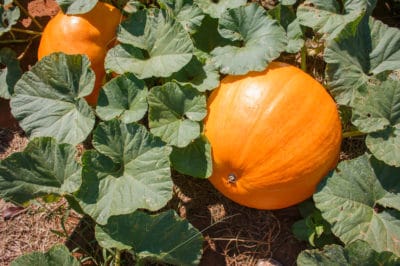What Does “Full Sunlight” Mean?
Any packet of seeds you purchase has growing directions on the back. Some may say the plants needs partial sun or shade, while others require full sunlight. All varieties of pumpkins require full sun.
“Full Sun” just means that your pumpkin plants need unblocked sunshine for optimal growth. If you plant your seeds in an area where there is shade from trees or buildings, they will not flourish the way they should.
How Many Hours of Sun do Pumpkins Need?
Pumpkins plants require a minimum of six hours of sunlight each day. However, to make sure your plants thrive, you should place them in an area that gets 8-10 hours of sun. A full day of sun, along with adequate water and fertilizer, will provide an optimal environment for your pumpkins.
Tip: Be sure to plant your pumpkins somewhere where other plants will not create shade for them.
Other Ways to Nurture Pumpkins
Although planting your pumpkin seeds in an open area with little or no shade will help the plants flourish, there are also other things you can do to provide the best possible growing environment for your plants.
- Control weeds. Not only do weeds inhibit root growth, but they also block vital sunlight and nutrition from reaching the plant.
- Train vines to grow away from taller plants that might create shade.
- Gently turn the pumpkins periodically for the sun to reach the entire pumpkin.
Abundant Sun Means an Abundant Harvest
When planting pumpkins, there is no such things as too much sunshine. From the fledgling sprouts to the mature fruits, pumpkins will gladly use as much sun as you can provide for them. While other plants may wilt or scorch in high heat and full sun, pumpkins bask in it.
As long as you are also providing enough water to keep the soil damp through the growing season, your pumpkin plants will thank you for giving them a hot, sunny spot in your garden.
